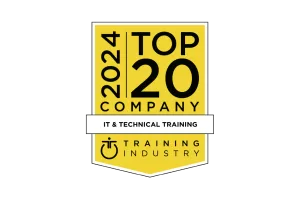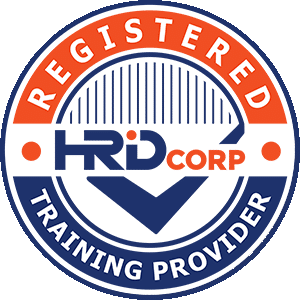Overview
Oracle Cloud Infrastructure Architect Associate
Develop key insights on core constructs of Oracle Cloud Infrastructure (OCI) and discover how its globally distributed infrastructure components can transform your enterprise operations. Gain practical experience and confidence in using OCI to meet various business and technical requirements.
Skills Covered
- OCI Identity and Access Management Basic Concepts (Identity Domains, Users, Groups, Policies, Compartments) and Advanced Concepts (Dynamic Groups, Advanced Policies)
- OCI Virtual Cloud Network, IP Management, VCN Options, Load Connectivity Balancers, DNS Management and Network Command Center services
- OCI Compute Basic Concepts (Images, Shapes, Capacity Types) and Advanced Concepts (Autoscaling, Confidential Computing, OS Management service)
- OCI Storage Offerings (Object Storage, Block Storage and File Storage)
Who Should Attend
Anyone who are interested.
Course Curriculum
Prerequisites
- You need to have a foundational level understanding of Oracle Cloud Infrastructure and knowledge of basic cloud computing concepts.
Download Course Syllabus
Course Modules
- IAM Introduction
- Overview of Identity Domains
- IAM Identity Domains Types
- Module Overview
- Default Domain
- Creating Identity Domains
- Demo: Creating Identity Domains
- Managing Groups • Demo: Managing Groups
- Creating Users
- Demo: Creating Users
- Understanding Administrator Role
- Demo: Understanding Administrator Role
- Policies
- Demo: Applying Policies
- Compartments
- Demo: Compartments
- Compartments Quotas
- Demo: Compartments Quotas
- Policy Inheritance and Attachments for Compartments
- Demo: Policy Inheritance and Attachments for Compartments
- Conditional Policies
- Demo: Conditional Policies
- Enforce Least Privilege – Advance Policies
- Tag Based Access Control
- Demo: Tag Based Access Control
- Network Sources
- Demo Network Sources
- Dynamic Groups
- Demo: Dynamic Groups
- Tips and Tricks to get maximum out of this course
- Module Overview
- CIDR Blocks/Prefixes-Part 1
- CIDR Blocks/Prefixes-Part 2
- Virtual Cloud Network
- VCN Components- Quick Overview
- Subnets – Part 1
- Subnets – Part 2
- Demo: Create a VCN (manually)
- Demo: Create a VCN (using Wizard)
- Route Tables – Part 1
- Route Tables – Part 2
- Demo: Route Tables
- Internet Gateway
- Demo: Internet Gateway
- Nat Gateway
- Demo: NAT Gateway
- Service Gateway
- Demo: Service Gateway – Part 1
- Demo: Service Gateway – Part 2
- Public Subnet
- Demo: Public Subnet
- Private Subnet
- Demo: Private Subnet
- VCN Security
- Network Security Groups – Part 1
- Network Security Groups – Part 2
- Demo: Network Security Groups
- Security Lists
- Demo: Security Lists
- Module Overview
- Overview of IP Management – Part 1
- Overview of IP Management – Part 2
- Reserved Public IP
- BYOIP
- Reserved IP Pools
- Demo: IP Management
- Module Overview
- VCN Connectivity Options
- Local VCN Peering – Part 1
- Local VCN Peering – Part 2
- Demo: Local VCN Peering
- Remote VCN Peering
- Demo: Remote VCN Peering
- BGP Basics
- Dynamics Routing Gateway – Part 1
- Dynamics Routing Gateway – Part 2
- Dynamics Routing Gateway – Part 3
- Dynamics Routing Gateway – Part 4
- Demo: Dynamics Routing Gateway
- Site-to-Site VPN – Part 1
- Site-to-Site VPN – Part 2
- Demo: Site-to-Site VPN – Part 1
- Demo: Site-to-Site VPN – Part 2
- Demo: Site-to-Site VPN – Part 3
- Fast Connect Overview – Part 1
- Fast Connect Overview – Part 2
- Fast Connect Overview – Part 3
- Fast Connect with an Oracle Partner
- Fast Connect with a Third-Party Provider
- Fast Connect Colocation with Oracle
- Demo: Fast Connect
- Fast Connect Redundancy Best Practices
- Transit Routing Scenarios – Part 1
- As an architect is it must to have a hands-on experience?
- Module Overview
- Load Balancer – Part 1
- Load Balancer – Part 2
- Load Balancer – Part 3
- Load Balancer Policies
- Healthchecks
- Public Load Balancer
- Demo: Public Load Balancer
- Private Load Balancer
- Demo: Private Load Balancer
- Network Load Balancer
- Demo: Network Load Balancer
- Web Application Acceleration Overview
- Web Application Acceleration Concepts
- Demo: Web Application Acceleration
- Module Overview
- What is DNS
- DNS Service Components
- Zones
- Public DNS Zones
- Demo: Public DNS Zones
- Private DNS Zones
- Demo: Private DNS Zones
- Private Views
- HTTP Redirects
- Traffic management
- Traffic management-Policy Types
- Demo: Failover Policy Type
- Demo: Load Balancer Policy Type
- Demo: Geolocation Steering Policy Type
- Module Overview
- Network Command Center Overview
- Inter-Region Latency
- Demo: Inter-Region Latency
- Network Path Analyzer
- Demo: Network Path Analyzer
- Network Visualizer
- Demo: Network Visualizer
- Capture filters
- Demo: Capture filters
- Virtual Test Access Points
- Demo: Virtual Test Access Points
- Roles and Responsibilities of Cloud Architect
- Module Overview
- Overview of Compute Service
- Platform and Custom images
- Import Export and BYOI
- Compute Shapes
- GPU Shapes
- Bare Metal vs Virtual Machine vs Dedicated Hosts
- Demo: Generate SSH Keypair
- Demo: launch and connect to a windows instance
- Demo: launch and connect to an Oracle Linux Instance\
- Demo: Create a custom image
- Capacity Types Preemptible Instances
- Demo: Preemptible Instances
- Capacity Types Capacity Reservations
- Demo: Create a Capacity Reservation and Launch Instances
- Capacity Types Dedicated VM Host
- Module Overview
- Burstable Instances
- Demo: Create a Burstable Instances
- Compute Vertical Scaling
- Demo: Scale Cores and Memory for an Instance
- Compute Auto Scaling
- Demo: Auto Scaling
- Oracle Cloud agent
- OS Management Service
- Demo: OS Management
- Run Command
- Demo: Run Command
- Instance Console Connection
- Demo: Console Connection
- Infrastructure Maintenance
- Shielded Instances
- Demo: Create a Shielded Instance
- Confidential Computing
- Module Overview
- Overview of Object Storage
- Object Storage Resources
- Object Storage Characteristics
- Demo: Create a Bucket – Console, Cloudshell, OCI CLI
- Demo: Upload and Access the Object & Bucket Visibility
- Multipart Uploads
- Demo: Multipart Uploads
- Managing Buckets and Objects
- Object Storage Tiers
- Auto- Tiering
- Demo: Update Storage Tier (Manually, Auto-Tiering)
- Object Lifecycle Management • Demo: Update Storage Tier (Lifecycle management)
- Roles and Responsibilities of Cloud Architect
- Module Overview
- Object Storage Replication
- Demo: Replication Policy
- Object Versioning
- Demo: Object Versioning
- Demo: Replication Policy with Versioning
- Retention Rules
- Demo: Retention Rules – Time Bound and Indefinite
- Object Copy
- Demo: Object Copy
- Object Storage Logging
- Demo: Object Storage Logging
- Securing Object Storage
- Pre-Authenticated Requests
- Demo: Create a Pre-authenticated request
- Demo: Create a Bucket with Customer Manager Key
- Demo: Re-encrypt an Object
- Demo: Create automation based on object state changes
- Module Overview • Overview of Block Volume
- Volume Attachment Types
- Volume Access Types
- Boot Volumes
- Demo: Block Volume Creation
- Demo: Attach Block Volume to Instance – Paravirtualized Attachment
- Demo: Configure Multiple Instance Volume Attachments – Part 1
- Demo: Configure Multiple Instance Volume Attachments – Part 2
- Block Volume Performance
- Dynamic performance scaling
- Module Overview
- Resizing a volume
- Demo: Volume Resize and Extend Partition
- Block Volume Backup
- Demo: Create a block Volume Backup
- Demo: Create a Backup Policy and define schedule
- Demo: Restore a Block Volume Backup
- Demo: Copy Block Volume Backup to another region
- Block Volume Clones
- Demo: Create a block volume clone
- Block volume Backup vs Clone Operation
- Block Volume: Cross-Region Replication
- Volume Groups
- Demo: Volume Groups
- Demo: Volume Groups Cross Region Replication
- Block Volume: Cross Availability Domain Replication
- Demo: Cross Availability Domain Replication
- Demo: Block Volume Encryption
- Module Overview
- Overview of file storage
- File Storage Concepts
- Demo: Create and Mount a File System
- NFS Export Option
- Demo: NFS Export Option
- File System Paths
- Module Overview
- File System Snapshots
- Demo: Create a Snapshots and Perform Restoration
- File System Cloning
- Demo: Clone a File System
- Demo: Encrypt using Customer Manage keys
- In-transit Encryption
- Demo: Set up In-transit encryption
- File System Replication
- Demo: File system replication
- File System Security
- File System Usage and Metering
- How do you get a job as a Cloud architect
Request More Information
Training Options
- VILT: Virtual Instructor-Led Training
- ILT: Instructor-Led Training
Intake: 14-18 Jul 2025
Duration: 5 Days
Guaranteed: TBC
Modality: VILT
Price:
RM8,000.00Enroll Now
Exam:
Intake: 14-18 Jul 2025
Duration: 5 Days
Guaranteed: TBC
Modality: ILT
Price:
RM8,000.00Enroll Now
Exam:
Intake: 13-17 Oct 2025
Duration: 5 Days
Guaranteed: TBC
Modality: VILT
Price:
RM8,000.00Enroll Now
Exam:
Intake: 13-17 Oct 2025
Duration: 5 Days
Guaranteed: TBC
Modality: ILT
Price:
RM8,000.00Enroll Now
Exam:
Exam & Certification
Exam 1Z0-1072-25: Oracle Cloud Infrastructure 2025 Architect Associate






